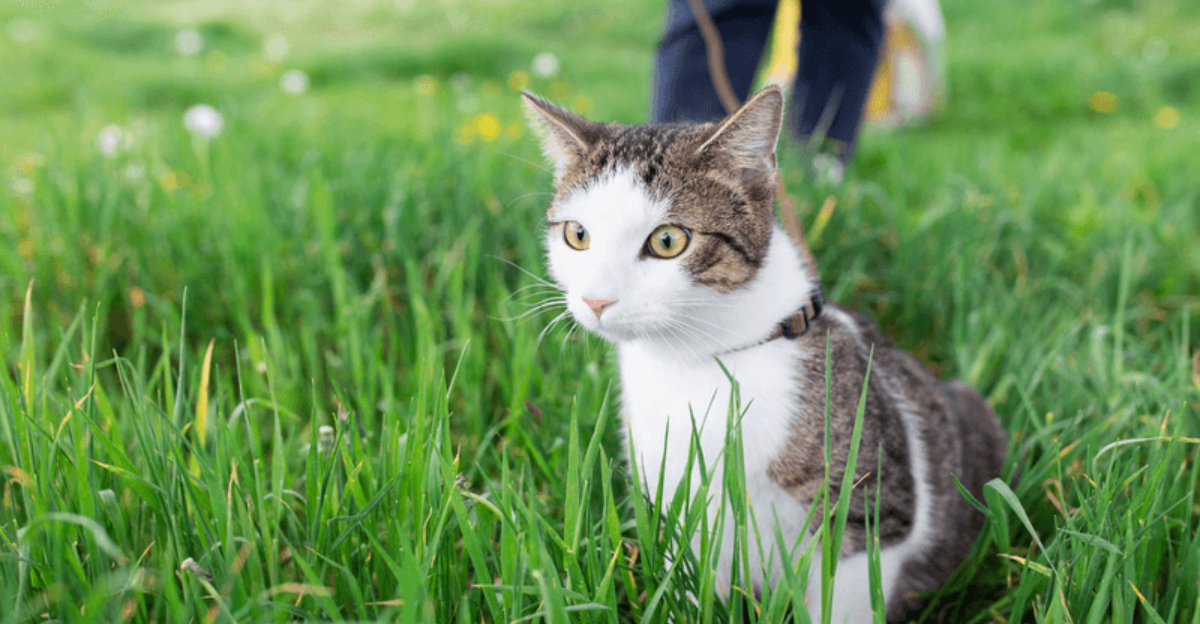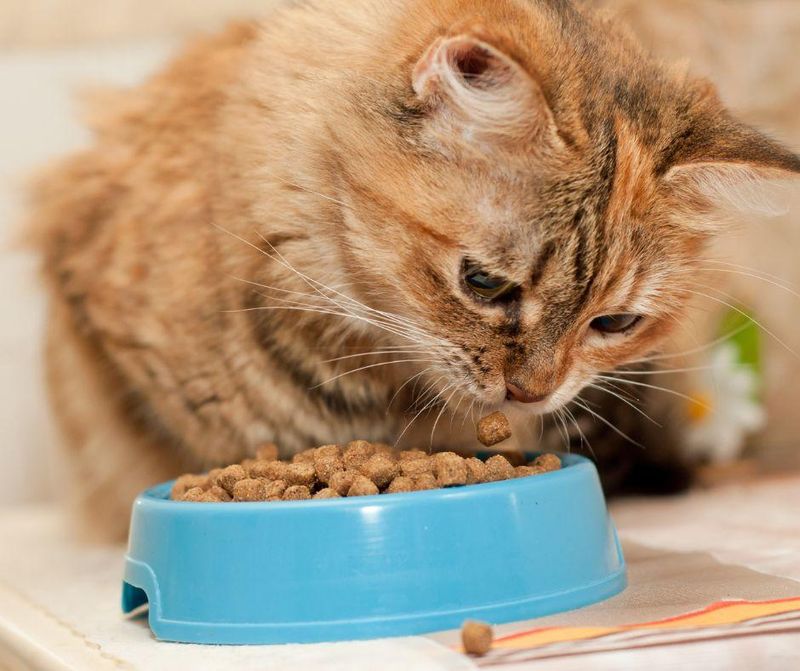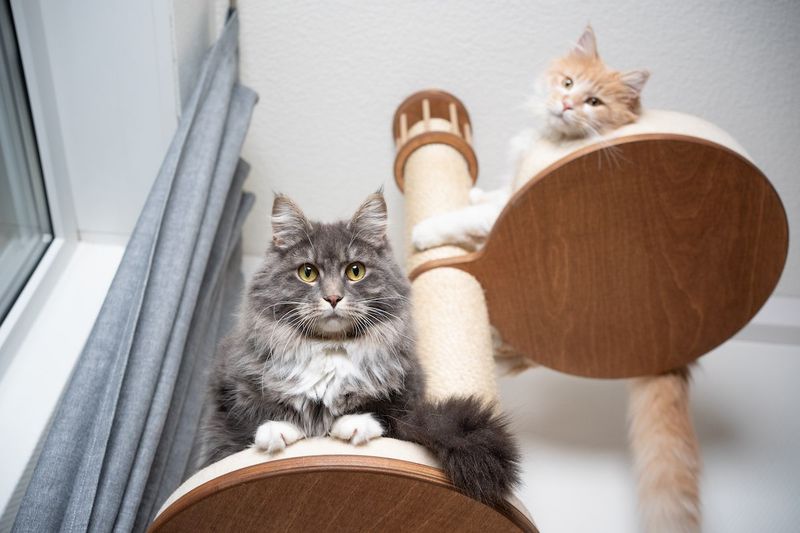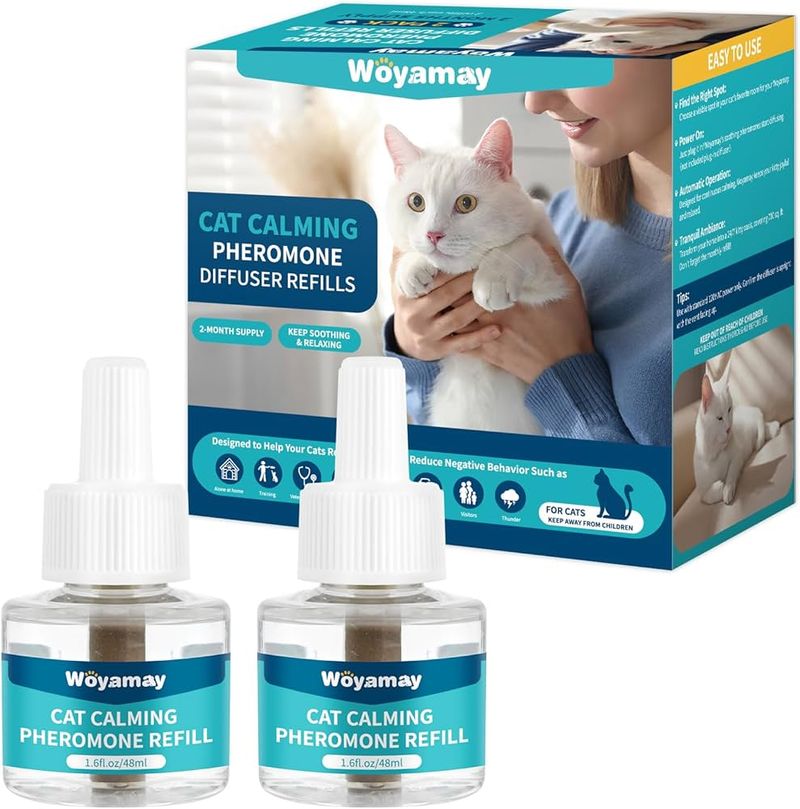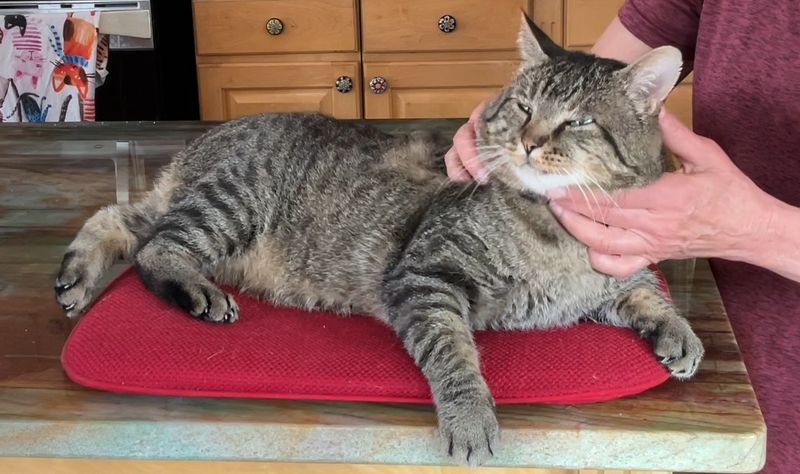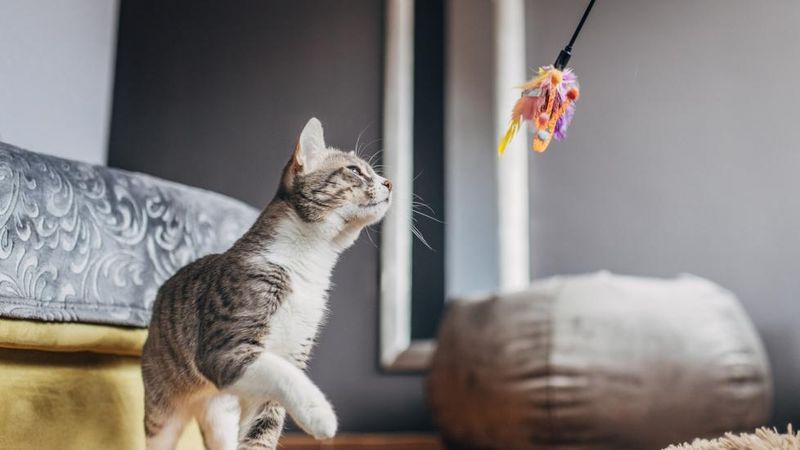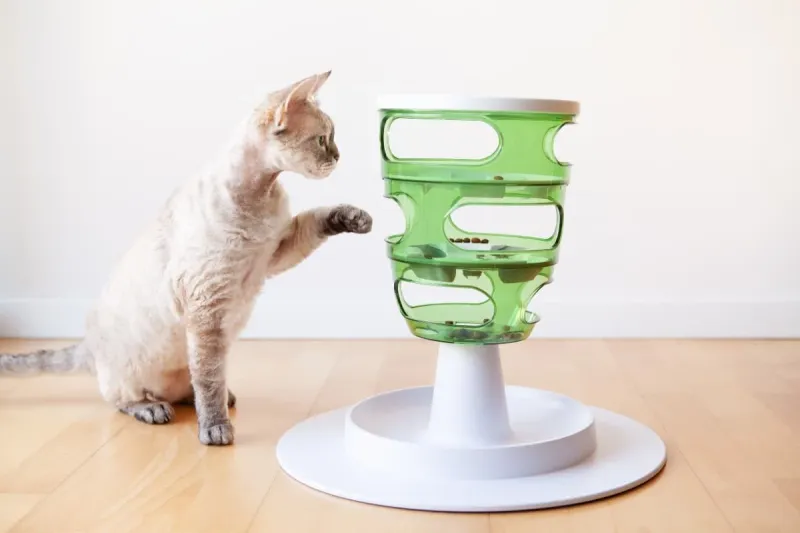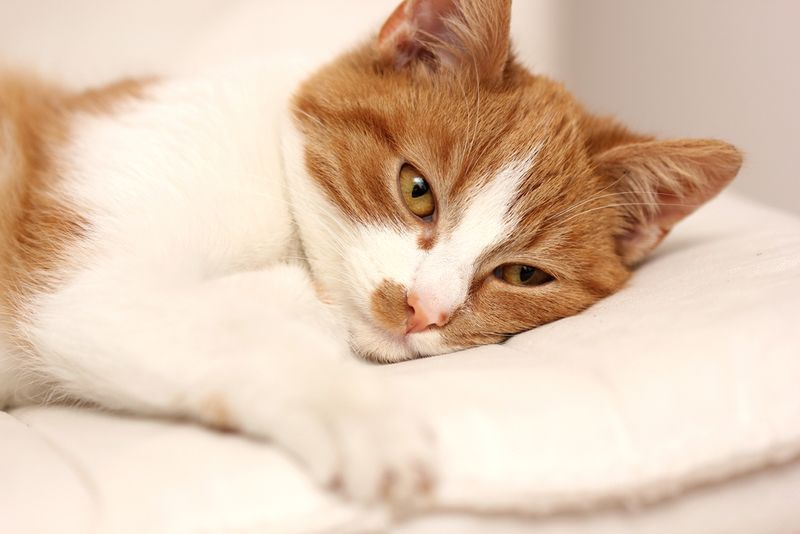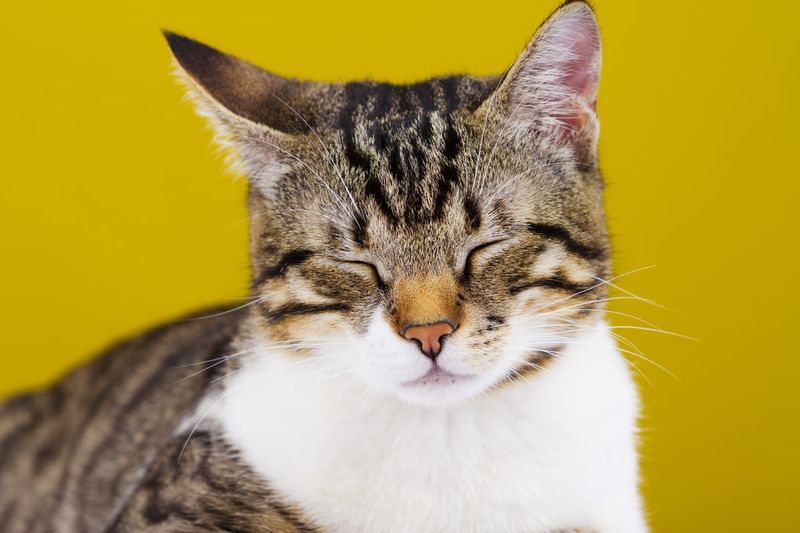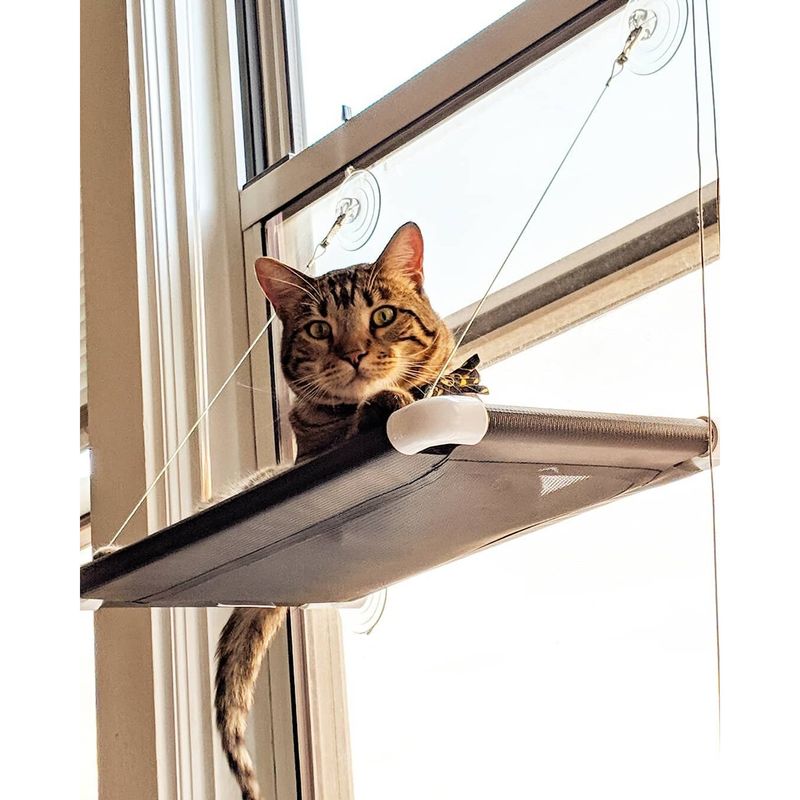📖 Table of Content:
- 1. Stick to a Regular Feeding Schedule
- 2. Create Vertical Escape Routes
- 3. Use Calming Pheromone Products
- 4. Provide Hiding Spots Throughout Your Home
- 5. Practice Gentle, Predictable Handling
- 6. Play Using Interactive Toys Daily
- 7. Maintain a Quiet Sound Environment
- 8. Keep Litter Boxes Clean and Accessible
- 9. Introduce Puzzle Feeders and Food Games
- 10. Establish a Grooming Routine
- 11. Maintain Consistent Daily Routines
- 12. Use Slow Blinking Communication
- 13. Create Window Viewing Stations
- 14. Offer Safe Outdoor Experiences
Cats often give the impression of independence, but they are not immune to anxiety. Signs such as hiding, overgrooming, or sudden aggression may indicate that a cat is feeling stressed. Recognizing these behaviors is key to understanding their emotional well-being.
A calm and stable environment plays a crucial role in helping cats feel secure. Stress can negatively impact a cat’s health as much as it affects their mood. Providing a peaceful space supports both physical wellness and emotional balance.
Simple daily routines can make a significant difference in easing a cat’s anxiety. Small changes in interaction and environment often help nervous cats become more relaxed. Ultimately, creating comfort for feline companions enhances their quality of life.
1. Stick to a Regular Feeding Schedule
Consistency is your anxious cat’s best friend. When meals arrive at the same times each day, cats feel secure knowing when to expect food. This predictability eliminates one major worry from their lives.
Set alarms if needed to maintain exact feeding times. Your cat’s internal clock is surprisingly accurate, and they’ll appreciate your punctuality. Many cat owners notice decreased pacing and meowing once a schedule is established.
Automatic feeders can help maintain consistency even when your routine changes. The steady rhythm of dependable mealtimes creates a foundation of trust that helps anxious cats feel safe in their environment.
2. Create Vertical Escape Routes
Cats feel safest when they can observe their surroundings from above. Installing cat shelves, tall cat trees, or clearing bookshelf space gives your anxious pet the perfect retreat when things get overwhelming.
These elevated spaces serve as security zones where your cat can monitor activities without feeling threatened. The ability to climb reduces stress hormones almost immediately. Vertical territories are especially important in multi-pet households.
Position these escape routes near windows for added enrichment. Your cat will appreciate having options to retreat upward rather than hiding under furniture, which often intensifies anxiety rather than relieving it.
3. Use Calming Pheromone Products
Synthetic feline pheromones mimic the natural facial pheromones cats release when they feel comfortable in their territory. Available as plug-in diffusers, sprays, or collars, these products send chemical signals that tell your cat “this place is safe.”
Many veterinarians recommend these products for cats with persistent anxiety. The effects aren’t immediate but build gradually over days or weeks. They’re especially helpful during thunderstorms, construction, or when introducing new pets.
Place diffusers in rooms where your cat spends the most time. Unlike medication, pheromone products have no systemic effects and work purely through your cat’s highly sensitive olfactory system.
4. Provide Hiding Spots Throughout Your Home
Safe retreats are essential for anxious cats who need quick escapes when feeling threatened. Cardboard boxes, covered beds, and cat tunnels scattered throughout your home give your nervous kitty options to decompress.
The perfect hiding spot should have a single entrance and be just large enough for your cat to fit comfortably. Some cats prefer elevated hiding places while others seek ground-level sanctuaries. Offering both types ensures your cat can choose what feels safest in any situation.
Never disturb your cat when they’re in their hiding spot. This space should remain their private territory where they can retreat without interruption. Respecting these boundaries builds trust over time.
5. Practice Gentle, Predictable Handling
Sudden movements and unexpected touches can trigger anxiety in sensitive cats. Approaching your cat slowly, speaking softly before touching them, and letting them sniff your hand first creates predictability they appreciate.
Focus your petting on their cheeks, chin, and the base of their ears rather than their back or tail. Watch for subtle signs they’ve had enough—tail twitching, skin rippling, or ears flattening mean it’s time to stop.
Short, positive handling sessions build confidence over time. Always allow your cat to leave interactions freely. This respect for their boundaries teaches them that human contact is safe and pleasant, gradually reducing their anxiety around handling.
6. Play Using Interactive Toys Daily
Regular play sessions aren’t just fun—they’re powerful anxiety relievers for cats. Wand toys with feathers or ribbons that mimic prey movements trigger your cat’s natural hunting instincts, releasing pent-up energy and stress.
Aim for two 10-15 minute play sessions daily, ideally before mealtimes. This schedule mimics a cat’s natural hunt-eat-groom-sleep cycle in the wild. The physical exertion helps burn stress hormones while strengthening your bond.
Keep play sessions predictable but exciting. End each session with a “catch” so your cat feels successful. Many behaviorists consider play therapy one of the most effective interventions for anxious cats, particularly those with aggression issues.
7. Maintain a Quiet Sound Environment
Cats have incredibly sensitive hearing that makes loud or unpredictable noises particularly stressful. Keeping your television and music at moderate volumes creates a more soothing atmosphere for your anxious feline.
Be mindful of household appliances that produce startling sounds. Warn your cat before starting the vacuum or blender by speaking to them calmly. Some cat owners find that playing soft classical music or nature sounds masks disruptive noises.
Consider using white noise machines in areas where your cat sleeps. The consistent background sound blocks out sudden noises that might trigger anxiety. This simple change often results in cats spending more time in common areas rather than hiding.
8. Keep Litter Boxes Clean and Accessible
Dirty litter boxes are major anxiety triggers for cats. Scooping waste at least twice daily and completely changing litter weekly provides your cat with a stress-free bathroom experience.
Follow the “one plus one” rule—one litter box per cat, plus one extra. Place these boxes in different, quiet locations throughout your home. Avoid placing litter boxes near noisy appliances or high-traffic areas where your cat might feel vulnerable.
Choose unscented litter and avoid covered boxes for anxious cats. Open boxes in semi-private locations offer the perfect balance of privacy and escape routes. This attention to bathroom comfort significantly reduces territorial anxiety and inappropriate elimination problems.
9. Introduce Puzzle Feeders and Food Games
Mental stimulation works wonders for anxious cats. Puzzle feeders that dispense kibble when manipulated give your cat a productive focus for their nervous energy while satisfying their natural hunting instincts.
Start with simple puzzles and gradually increase difficulty as your cat masters each level. Food balls that release kibble when batted around the floor are perfect for beginners. The combination of physical activity and problem-solving creates a healthy outlet for stress.
Rotate different puzzle types to maintain interest. Many cat behaviorists report significant improvement in anxious behaviors when cats must work for portions of their daily food. The mental engagement distracts from anxiety triggers while building confidence.
10. Establish a Grooming Routine
Regular brushing sessions do more than reduce hairballs—they create bonding opportunities that build trust with anxious cats. Short, positive grooming experiences teach your cat that human touch predicts good things.
Use a soft brush and gentle strokes, always following the direction of fur growth. Keep initial sessions under 5 minutes and gradually extend as your cat becomes comfortable. Offering treats during and after grooming creates positive associations.
Pay attention to your cat’s body language during brushing. Purring and kneading indicate enjoyment, while tail swishing or skin twitching means it’s time to stop. This respectful approach transforms grooming from a potential stressor into a calming ritual your cat will look forward to.
11. Maintain Consistent Daily Routines
Cats thrive on predictability, which makes consistent daily schedules powerful anxiety reducers. When feeding, playing, and sleeping happen at regular times, cats feel secure knowing what comes next.
Try to wake up, go to bed, and leave for work at similar times each day. Even weekends should maintain some routine elements. Your cat’s stress levels drop significantly when their world becomes predictable.
Create a visual or digital schedule if multiple family members care for your cat. This ensures everyone follows the same routine. Many cat owners notice their anxious pets begin to relax once they realize the pattern of daily life has become dependable and safe.
12. Use Slow Blinking Communication
Slow blinking is a gentle way cats show trust and affection. When a person returns the slow blink to a nervous cat, it signals safety and calm. This quiet form of communication strengthens bonds without overwhelming the cat.
Make eye contact from a comfortable distance, then slowly close your eyes for a second or two before opening them again. Repeat this several times. Many cats will return these “kitty kisses” once they feel safe.
Practice this daily, especially during quiet moments when your cat seems receptive. Research shows this form of communication reduces stress hormones in cats. It’s particularly effective with shy or newly adopted cats who are still building trust.
13. Create Window Viewing Stations
Outdoor stimulation provides a healthy distraction for anxious indoor cats. Setting up comfortable perches near windows with bird feeders or squirrel activity outside creates engaging “cat TV” that redirects nervous energy.
Install sturdy window perches that can support your cat’s weight securely. Position them at various heights throughout your home to offer different viewing perspectives. The mental stimulation of watching outdoor creatures provides hours of healthy distraction.
For cats with outdoor experience, these viewing stations satisfy their craving for nature while keeping them safely inside. Many cat owners report decreased pacing and vocalization after establishing these enrichment zones. The ever-changing outdoor scene becomes a positive focus for anxious minds.
14. Offer Safe Outdoor Experiences
Controlled outdoor access can significantly reduce anxiety in some cats. Harness training allows for safe exploration that satisfies natural curiosity without the dangers of free roaming.
Start harness training indoors, using positive reinforcement and patience. Once comfortable, short outdoor sessions in quiet areas help your cat build confidence. Portable mesh enclosures or catios provide another safe outdoor option.
Fresh air and natural stimulation engage all your cat’s senses in healthy ways. The natural environment provides enrichment no indoor setting can fully replicate. Many formerly anxious cats show remarkable improvement after regular, safe outdoor experiences become part of their routine.
